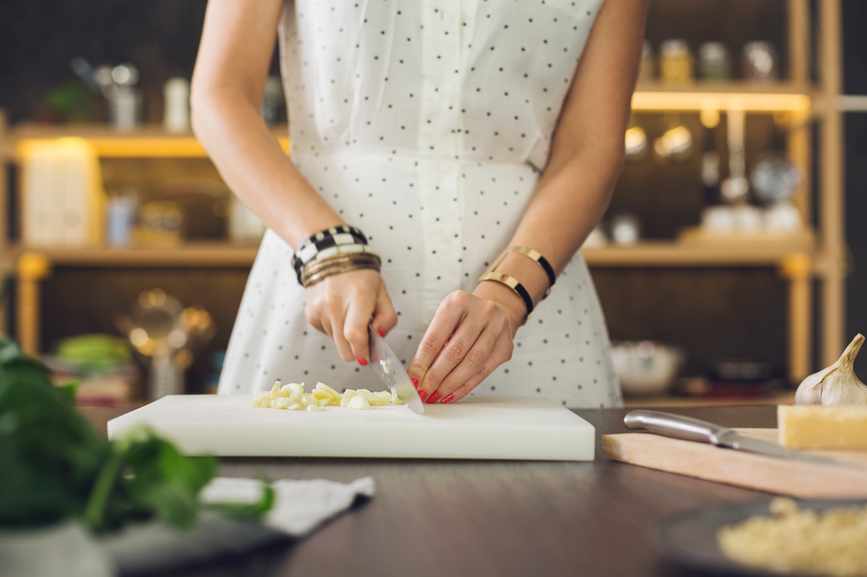How to store cut-up pieces of garlic for home use – Storage Guide – There are plenty of kitchen staples we try to have on hand at all times to ensure that our homemade meals are delicious and flavorful. But let’s be honest: Garlic is the sole non-negotiable ingredient (at least in my household). If dinner time rolls around and I find myself without any fresh cloves to cook with, either pigs are flying or mercury is *next-level* in retrograde.
With this dedication comes education. Namely, the knowledge of how to store garlic so it lasts as long as possible without bringing any musty, bitter, or rancid taste to the table. Indeed, proper storage is crucial to ensuring that your garlic realizes its full flavor-packed potential.
How long does garlic last?
Garlic, if stored correctly, is able to last a full six months, which means that you can cross this ingredient off your shopping list for many, many trips so long as you’re strategic. It’s important to note that this is only true for full bulbs of garlic—once you start separating individual cloves, the lifespan of the ingredient decreases to a matter of weeks. And if you’ve already chopped the garlic, plan on using the ingredient in the next 24 hours.
How to store garlic so it lasts as long as possible
So how can you actually ensure that your garlic is being stored properly? “For starters, be mindful of what kind of garlic you’re buying in the first place,” says Moustafa Elrefaey, Executive Chef and co-founder of Egyptian restaurant Zooba.“If you can, buy garlic with no roots.” He then suggests braiding it using twine or string, if you want to go above and beyond. “Not only will it look nicer, but the braiding will lengthen its shelf-life.”
Next (and most importantly), rather than allowing your garlic to lie around willy nilly on your kitchen counter or languish forgotten in your fridge, find a place in your pantry that is as close to 65°F as possible. Read: If you’re keeping your garlic right next to your cooktop or other heat-emitting appliance for easy access (near a stovetop spice rack, for instance), you should consider relocating it, stat. While this location is convenient, it’s definitely causing your garlic to go bad much earlier than it ought to.
“Fresh bulbs of garlic should always be kept away from excessive heat,” says Chef Danny Lledo, who heads up the kitchen at Michelin-Starred Xiquet in Washington, D.C. So if you’re frequently using your range or your oven, keep your garlic far away to help keep the bulbs fresh and fragrant for longer. In fact, according to Forough Vakil, chef and founder of Le Bon Nosh in Atlanta, “Garlic can be stored in a well-ventilated drawer—the darkness and lack of stops it from germinating and extends its life.”
Moreover, Lledo underscores the importance of keeping your garlic dry to help prevent mold and mildew growth, which will quickly cause the cloves to blacken and turn rancid. If you’ve ever wondered why garlic holders often have little holes along the sides or in the lids, Lledo explains that it’s to help provide the bulbs with gentle airflow. “If they’re kept in a fully sealed environment, which traps heat and moisture inside, the garlic can turn dank,” he says.
Of course, you don’t need to buy a garlic holder to help your bulbs last longer—but definitely avoid sealed ziploc bags or other non-breathable environments that you may use to try to contain garlic’s aroma. A simple glass jar should do the trick.
How to store cut-up pieces of garlic
While cutting into or peeling the garlic undoubtedly shortens its lifespan, Lledo notes that you have a few options to keep it fresh. “Once you’ve starting mincing garlic, store it in olive oil,” he says. This trick works because it maintains the garlic’s moisture, and consequently, its taste. (And who doesn’t want garlic-infused olive oil for cooking with or using as a delicious dip for bread?)
You can also freeze garlic in many different forms, whether in full cloves, minced pieces, or as a paste. Assuming you’re starting with fresh garlic, you’ll want to be sure to peel the garlic completely and remove any green sprouts. You can then either pulse the garlic in a food processor or mince it finely so that it’s ready to freeze in a ziploc baggie for several months at a time.






Leave a Reply